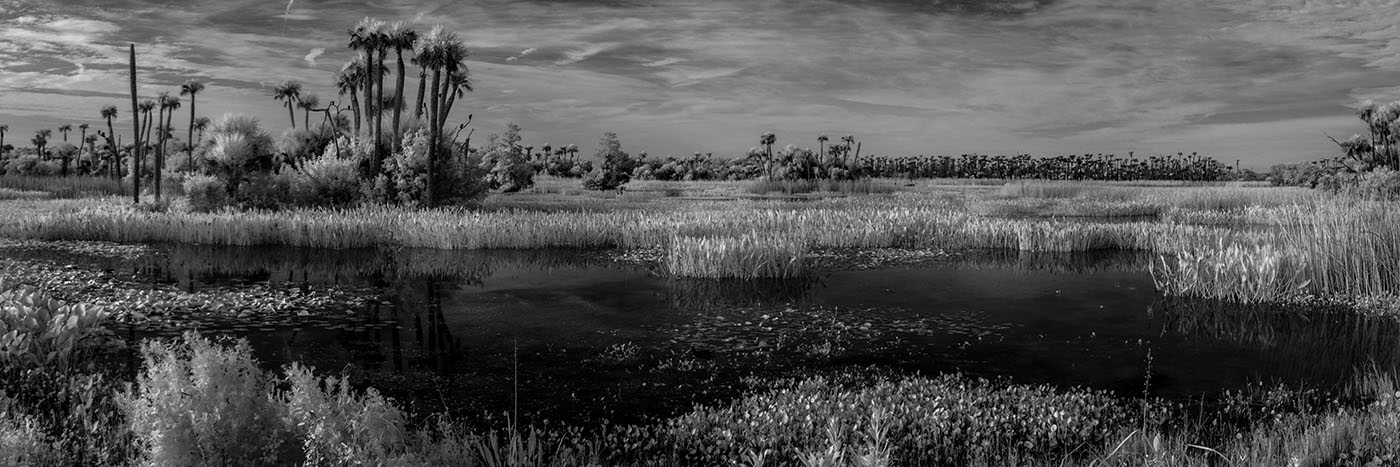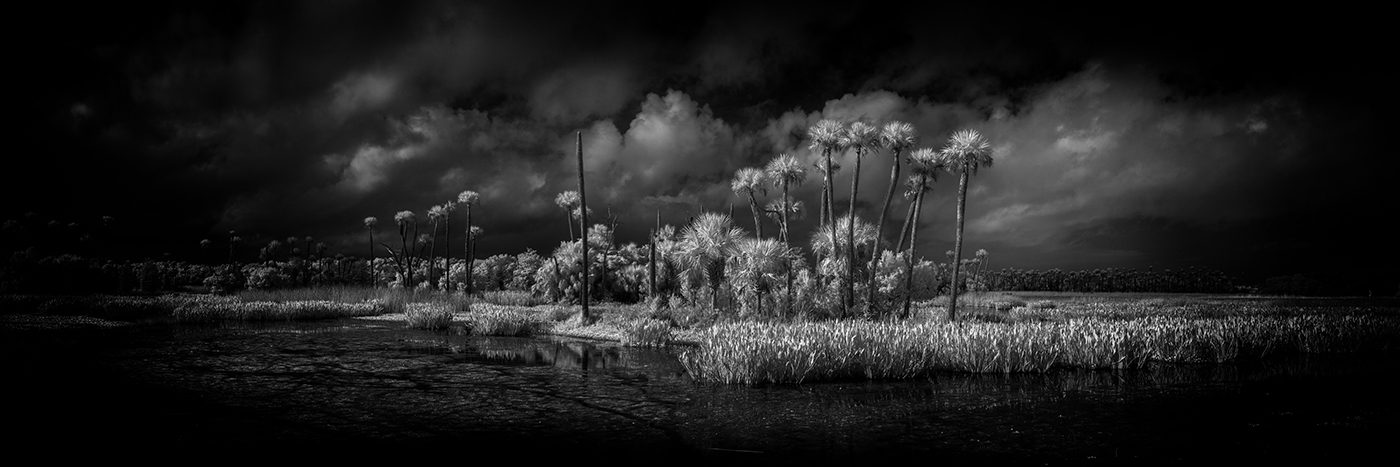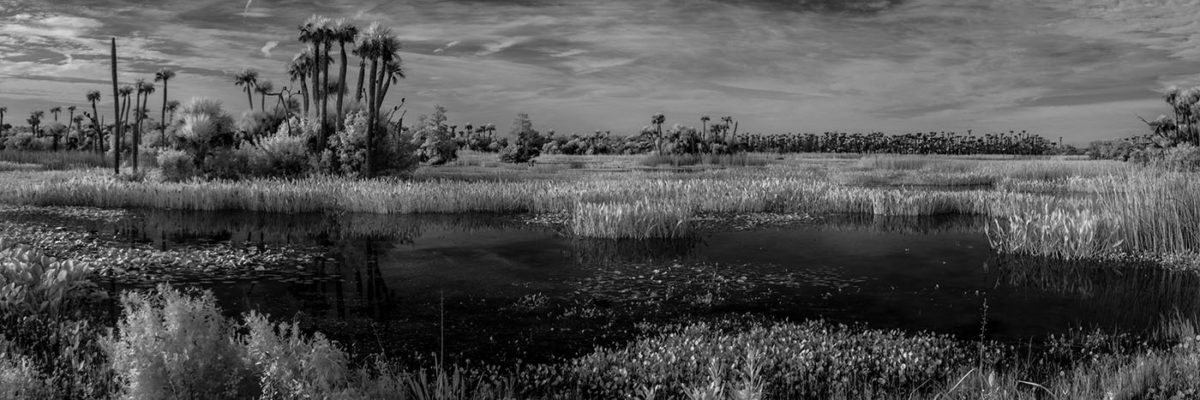First of all, finding my own photographic style was one of the most challenging things I have done in my photography career. Secondly, it has changed and morphed as I have aged and become more deliberate in how I capture my images.

I have also heard people using photographic style, photographic vision and photographic message synonymously in conversations. In my opinion, they are different, but yet dependent upon one another. My photographic vision depends upon the message I want to send the viewer and in the case of my infrared work – I want to show the beauty of the world around us through landscape photography. My vision is the use of black and white imaging. But my style, infrared black and white photography, resulted from the need to differentiate my work visually from a host of other photographers and photographs that we are all bombarded with daily on the internet, social media and television.
 Taking the first baby steps of the process begins with determining your own goals for your work. This could all be centered around a location nearby, a desire to shoot portraits, cars or any number of things. But more importantly – this is the first step in building a cohesive body of work. Within this body of work, you will build a portfolio – typically ten images that define who you are as a photographer, but more importantly – who you are as an artist.
Taking the first baby steps of the process begins with determining your own goals for your work. This could all be centered around a location nearby, a desire to shoot portraits, cars or any number of things. But more importantly – this is the first step in building a cohesive body of work. Within this body of work, you will build a portfolio – typically ten images that define who you are as a photographer, but more importantly – who you are as an artist.
Once your goal is established – start with one, then build others if you wish – seek out sources of inspiration. My home is in Florida, therefore, much of my work is Florida landscapes. Yes, we have theme parks and beaches, but there is more to my home state than what many people come here to experience. One of my early, and still today, influences is Ansel Adams, Clyde Butcher is another. Look at their work, study the image slowly. Ask yourself what they did to capture the image – what about the image speaks to you? I would then encourage you to do similar things in your image. The most important thing, however, is not to copy all of it – this is YOUR style that is developing. Besides Ansel Adams has already perfected “Ansel Adams”, I am not going to do it better than he did.
I criticized my own work relentlessly – you must be your own critic. Your portfolio must show only your best images. Being your own worst critic, will aid tremendously in developing this. I still ask myself, what can I do better? This ensures my work continuously evolves. In my world of working professionally, if I cannot sell the image, why keep it. I realized after years of working in photography that images do not heal themselves overnight in the hard drive. I keep only about 3% of what I capture.
Never be afraid of mistakes! If I am saving only 3% of what I shoot, that means I make mistakes 97% of the time – this could be aperture, shutter speed, shooting position, camera height and angle. It could be the wrong time of year or wrong weather conditions. Each of your mistakes is an opportunity to learn and further define who you are as a photographer. Mistakes help clarify your message and define your vision too.
Now, you will have captured a number of images by this point you may have captured either a diverse array of images or a concentrated study. Select 10 or so of the strongest images and ask yourself – What is the message in my work? – What am I saying to the viewer? It may take some time, but you will find the answer. Then ask yourself color, black & white, or Infrared?
My own journey to define my own photographic, and eventually infrared, vision began with infrared film in the 1980’s. I worked within just one film type (qualities can vary between manufacturers) to understand what I liked and what I didn’t. My own style evolved slowly to a technique to minimizing the silver glow and the wood effect yielding sharp contrasts in dramatic images. I like showing points of lands and clumps of trees positioned with the rule of thirds. I enjoy curving waterways in the foreground. When storms approach, you will find me packing my gear and heading to them.
I also learned that technical skills matter – I shoot my landscape work 100% manually to the point that I use a handheld light meter that I have self-calibrated to my own style of infrared landscape photography.
Also, the best gear in the world, the finest lenses and the most expensive tripod in the world’s most photogenic location will not go out by themselves and capture a great photograph. It is your vision using the tools at hand that will do that.
Lastly, listen to what is around you and within you. One of the hardest things for my landscape photography students to do is stop, when they get to a location. Before cameras come out, I make them all stop for an exercise. I have them close their eyes, take a few deep breaths and then just listen. After a few moments I tell them to feel with the surface of their skin only. Then finally, I tell them to identify any smells that are present.
Now, I ask them to write down all of these things they feel – then number them in the order of importance. Each student then sets up the camera in a spot that best reflects what they just experienced – this is their visual interpretation.
I go to each student and explain that the next exercise is using their visually chosen location and incorporating the experienced elements into just one word or one phrase. Their answer is the message for their viewer within their photograph.
Today I use both an infrared converted camera and the filters offered by Singh Ray on a non-converted camera. My choice is dependent upon what I would like my final image to look like and what my message to the viewer is. Many of Singh Ray’s other glass filters affect infrared and have a place in my work.

